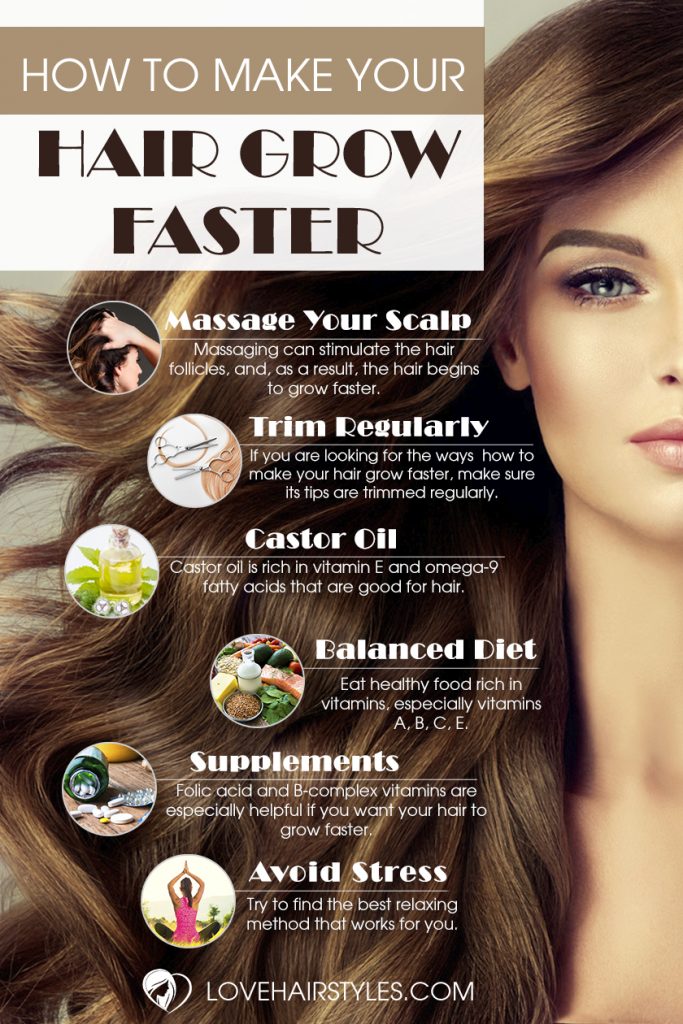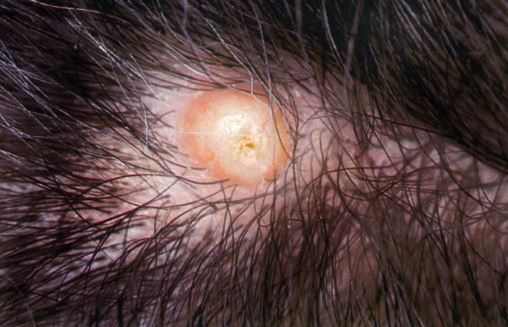Table Of Content
A diet rich in vitamins and minerals is one of the ways to ensure that your hair grows stronger and thicker. Brushing your hair regularly with a gentle hairbrush can help speed up hair growth in several ways. First, it helps distribute your hair’s natural oils all the way to the tips, improving the appearance of your hair. Finally, if you’re applying hair growth serum in the evening, consider your skin type—since certain ingredients, such as oils, can potentially rub off onto your pillow and be transferred to skin. “For sensitive or acne-prone skin, either frequent pillowcase changes or wearing a hair bonnet after serum application may be helpful,” she says. Yes, the health of a hair follicle directly impacts the speed of hair growth.
Hair Growth Tip #2 – Avoid Very Cold Showers
This also helps you if you cut your hair too short and want it to grow longer faster. It might sound counterproductive when you want your hair to grow longer, but regular trims get rid of dry, damaged split ends and are necessary for natural, healthy growth. If left untreated, split ends can work their way up the shafts of your hair strands and cause even more breakage, which means the only thing growing will be your frustration. But if your stylist takes off too much length every time you go in for a visit, your hair won’t get longer, so make sure you clearly communicate your hair goals. Depending on the condition of your hair, your hairstyle, and your daily routine, you could need a trim anywhere from every six weeks to six months. That said, the better you care for your hair on a day-to-day basis, the less often you’ll need trims, and the longer your hair can grow naturally.
Prioritize the health of your scalp
A 2020 study into early onset alopecia found that those who smoke were more than twice as likely to have thinning hair than those who do not smoke. In the review, research into caffeine shampoo indicated that it could reduce the amount of hairs that fall out during combing and slow down hair loss progression. According to one 2016 article, a lack of protein can lead to hair fragility and brittleness.
Good skin days ahead
Coloring, bleaching, and heat styling your hair may be fun and let you have fun with changing hair looks, but if they are done too often, they may reduce the overall health of your hair. If you struggle with maintaining a balanced diet daily, you may be able to add in a hair skin and nail supplement or multivitamin to help cover all of your hair’s needs. "I warn all my patients that for the first month of topical minoxidil use there can be a paradoxical worsening of shedding which recovers if you continue using the medication," McMahan explains.
Talking to your doctor at the first sign of slowed growth is the best way to stay on top of what is happening to your hair. McMahan says some people (i.e. those who are not pregnant or breastfeeding) can start an over-the-counter topical minoxidil (Rogaine) extra strength, twice a day. Great food sources of omega-3s include salmon, tuna, flaxseed, walnuts, and plant oils such as soybean and canola oil. This phase is transitional and marks the change between the growth phase and the resting phase. Around 85–90% of the hair on a person’s head is in the anagen phase at any one time.
Scalp Massage for Hair Growth: Does It Really Work? - Healthline
Scalp Massage for Hair Growth: Does It Really Work?.
Posted: Fri, 22 Nov 2019 08:00:00 GMT [source]
For some lucky individuals, the growing phase lasts as long as seven years; for others, it's as little as two. At the end of this stage, the strand falls out, and its follicle remains dormant and hairless for about three months. After that, a sprig of hair finally sprouts, and the hair growth process starts again.
Topical Minoxidil is one of the only 2 FDA-approved medications for male pattern hair loss. Common conditions that can negatively affect the health of your hair follicles include dandruff, psoriasis, and eczema. So, taking care of these conditions quickly when they arise can help get your scalp back to better health and your hair growing in healthily. You probably know this already, but any hairstylist will tell you the most obvious way to help your hair grow faster is to ditch your routine of hot tools. "Blow-dryers and styling irons can certainly damage your hair by making it dry and brittle, which can lead to breakage and shorter hair length," advises Bauman.
Medical Issues and Hair Growth Disorders
This phase allows the follicle to grow new hair unless it is damaged or affected by an underlying condition, such as alopecia. It also noted that female hair follicles are more sensitive to caffeine. Cysteine, which is an amino acid, is important in the rate of hair growth. Additionally, the National Institutes of Health (NIH) state that vitamin B7, or biotin, deficiencies can lead to thinning of the hair and hair loss all over the body.
Because of antibacterial and antifungal properties, many essential oils like tea tree oil are effective for targeting conditions like dandruff or scalp eczema. This keeps the hair and scalp healthy and moisturized, supporting an optimal environment for hair to grow. An over-the-counter (OTC) medicated topical treatment known as Rogaine (minoxidil) is commonly recommended by healthcare providers to promote hair growth and enhance hair thickness and density.
If you find it difficult, start with more frequency, say, every other day. Little by little, make the intervals longer until you reach the goal. Dry shampoo can really help you out in training your hair for rare washing. To speed up hair growth, maintain a healthy lifestyle, get enough sleep, eat a balanced diet, and consider hair growth supplements after consulting a healthcare professional. While you can’t change your genetics, you can certainly influence the speed of your hair growth through lifestyle choices and careful hair care.
"They nourish hair follicles to give strands that strong, shiny, lustrous glow." Some studies and anecdotal evidence have shown that using herbs like rosemary water as a hair tonic or wash can prompt the growth of hair without the added chemicals or toxins that other products may contain. A theory is that herbs might encourage blood flow to the scalp, which reduces inflammation and supports a healthy environment for hair growth. For example, dandruff shampoos with zinc pyrithione, salicylic acid, sulfur, selenium sulfide, ketoconazole, and coal tar can control dry, flaky skin on the scalp. They also help prevent the itching and scratching that can worsen hair loss—allowing the hair follicles to focus on hair growth and strength. For maximum benefits, add a hair-friendly oil to your scalp massage routine.
Hair grows at an average rate of half an inch per month, or about six inches per year. Wendy Wisner is freelance journalist and international board certified lactation consultant (IBCLC). She has written about all things pregnancy, maternal/child health, parenting, and general health and wellness. Almost as important as what you use to brush your hair is when you choose to do so. Instead of detangling after the shower (when your hair is at its most vulnerable and fragile), comb through your knots before you wash your hair.
Be sure to test for allergic reactions or consult a healthcare provider with any questions. A person can also maintain the health of their hair through everyday care. One 2016 article notes that vitamin B2, or riboflavin, deficiencies have associations with hair loss. The set includes almond, avocado, castor, coconut, and grapeseed oils. If you’re new to carrier oils, this is a good way to try multiple types without investing in larger bottles of each.














